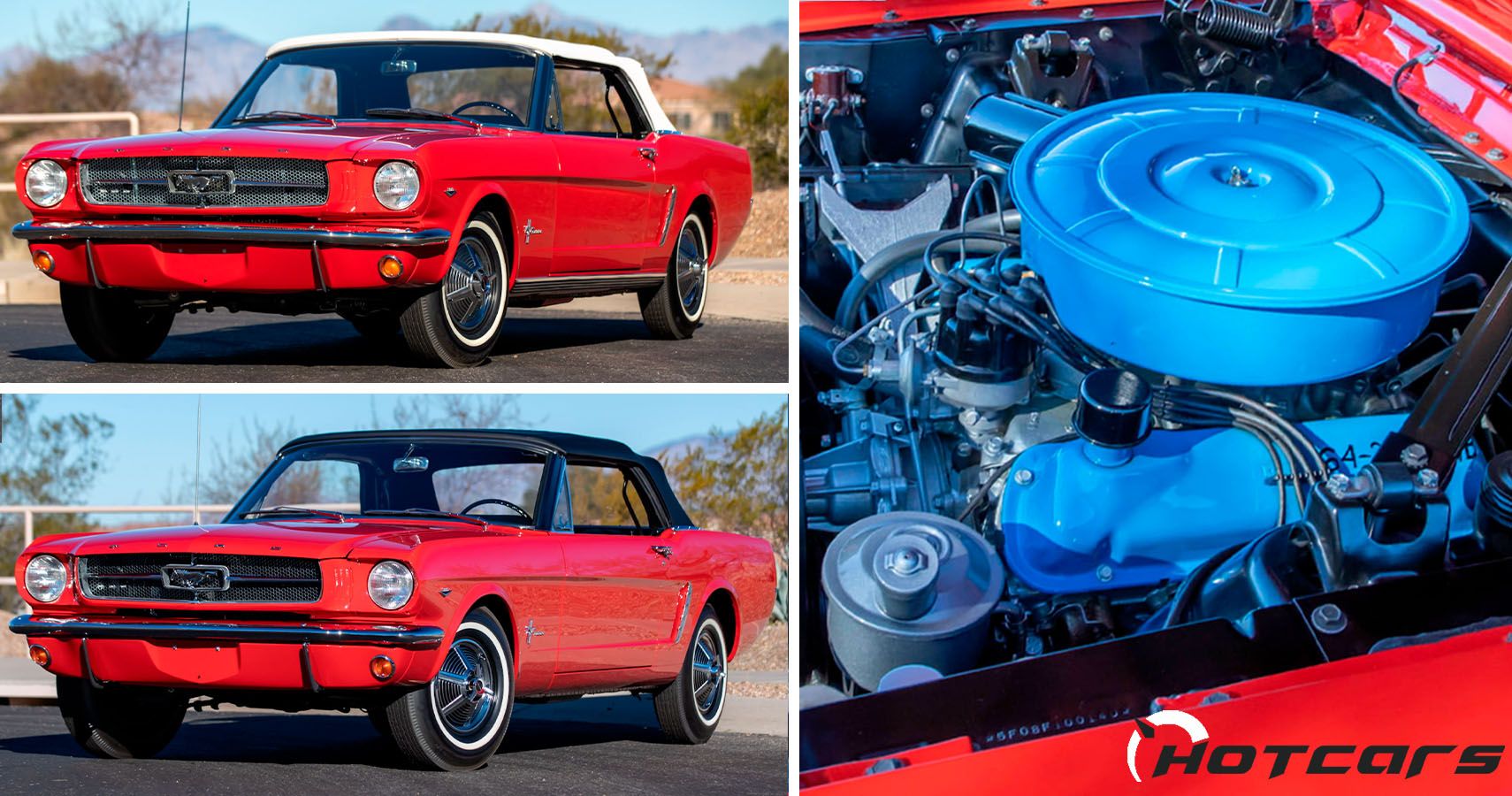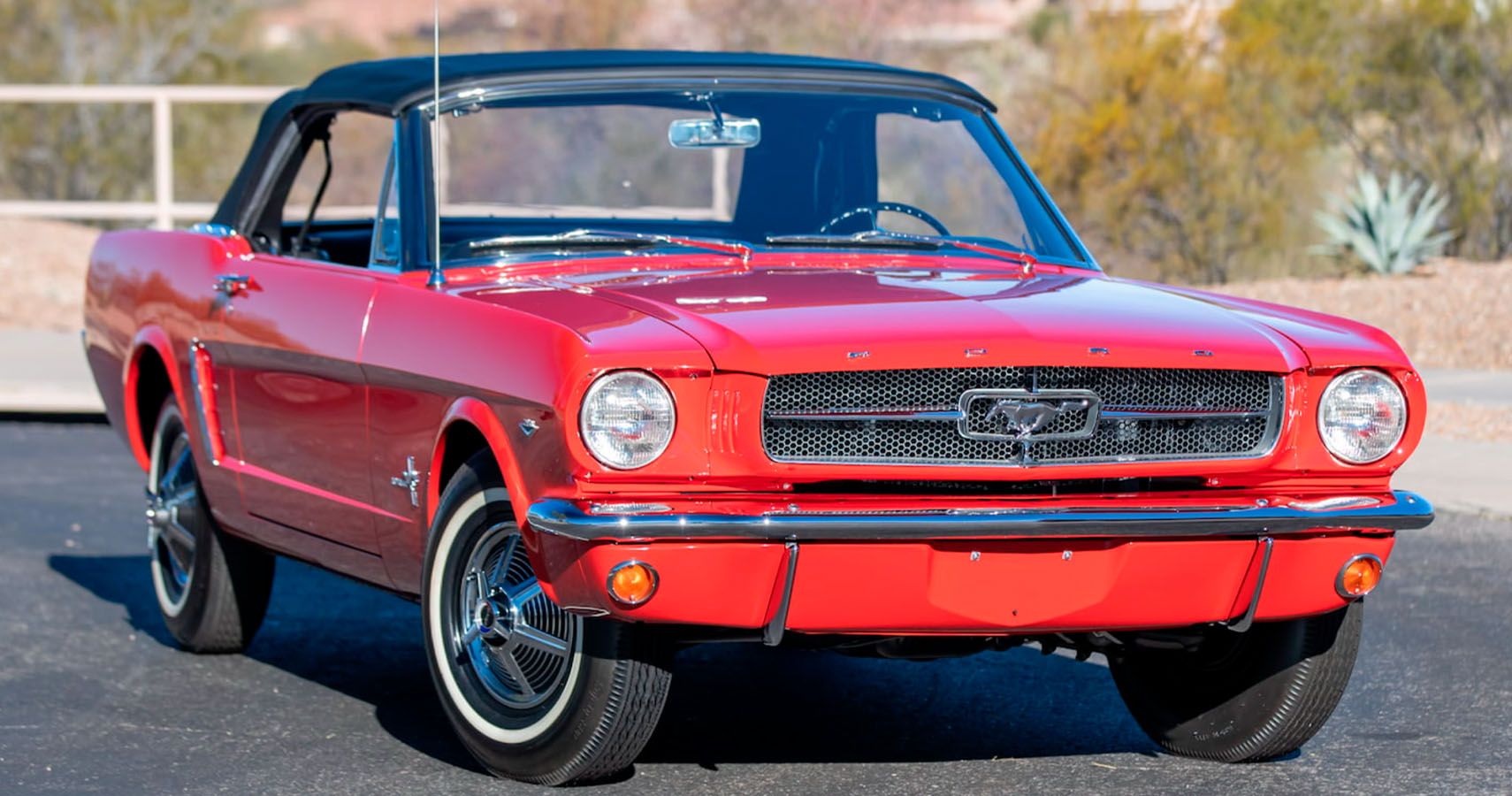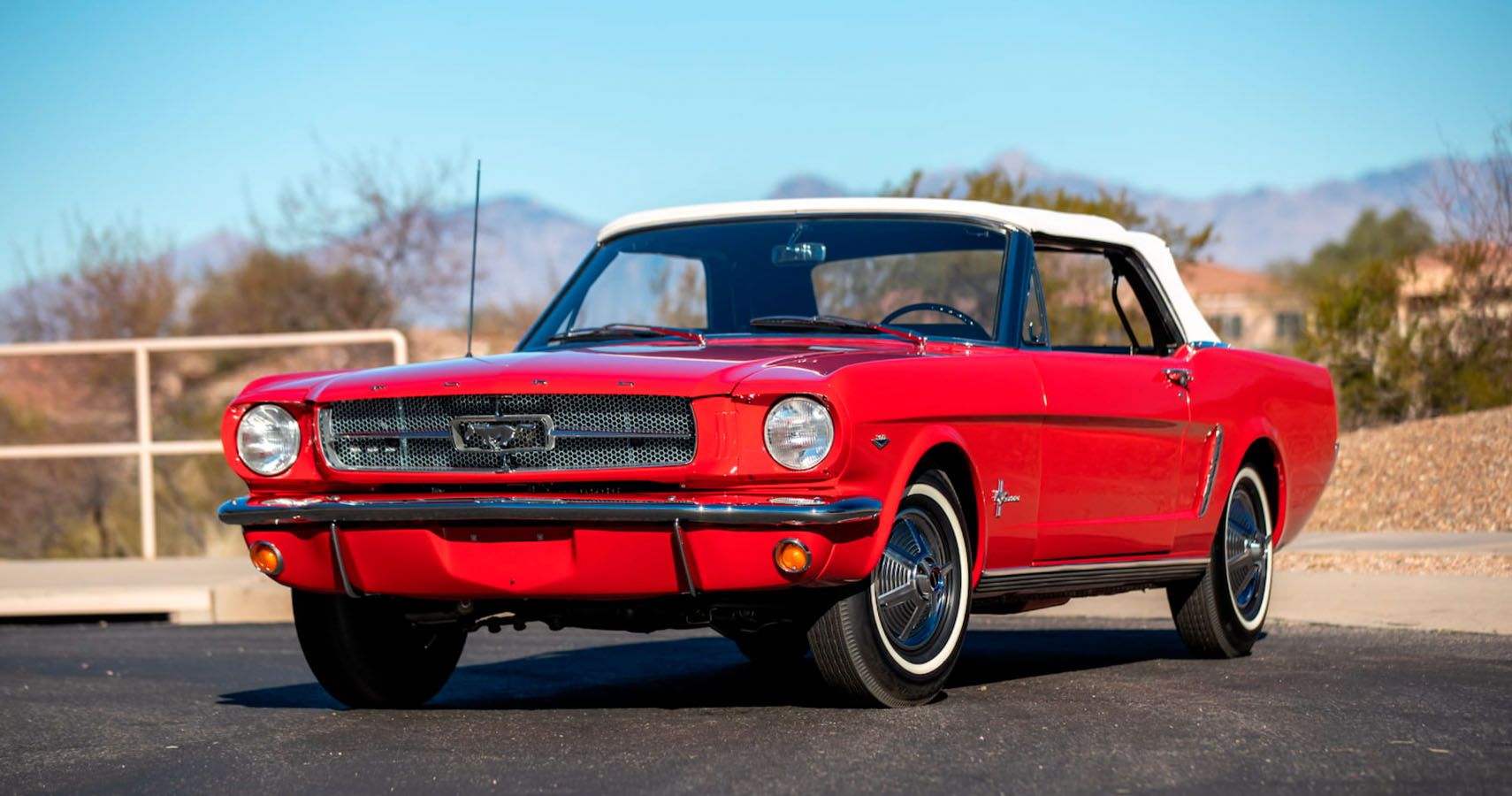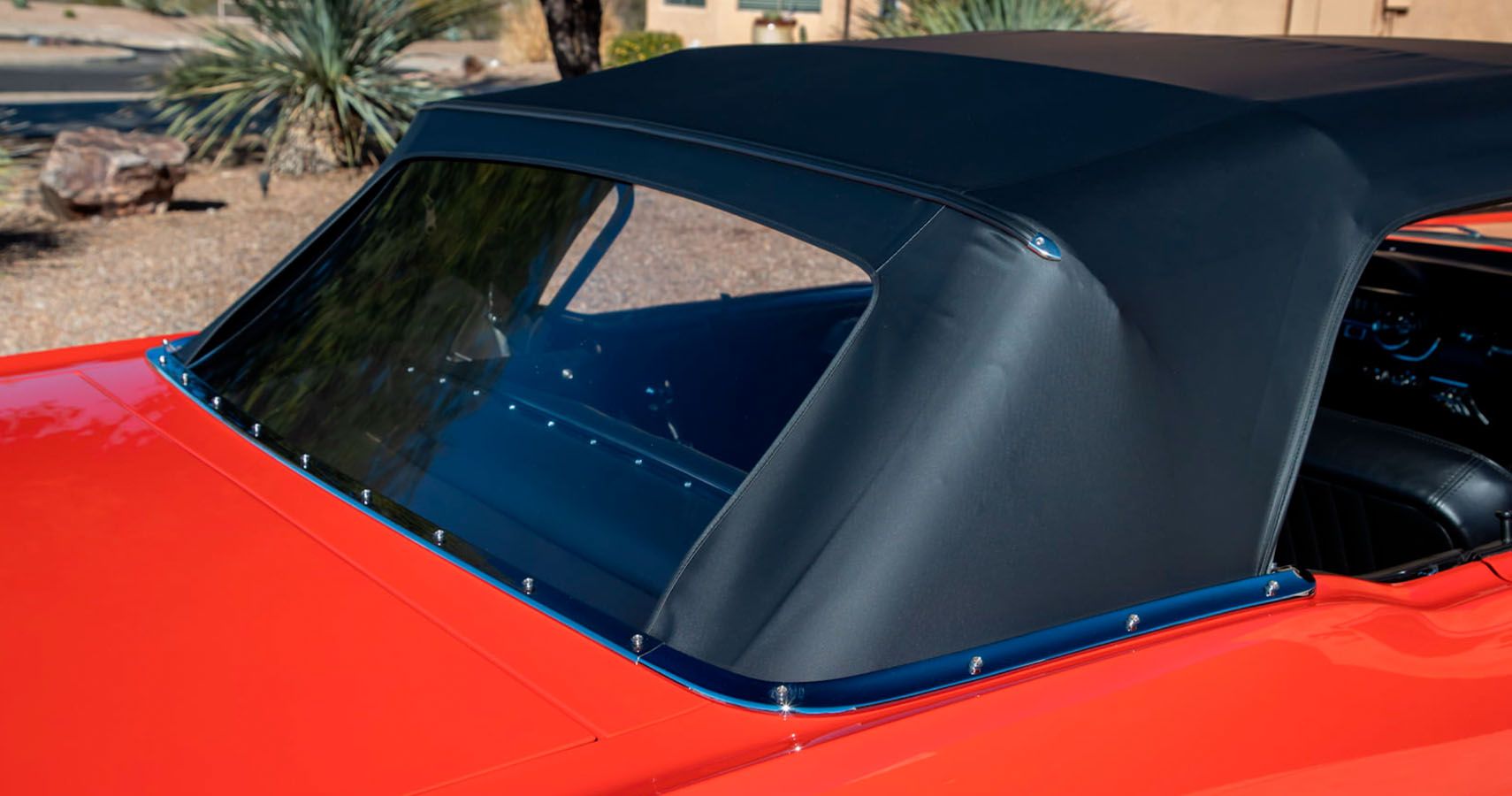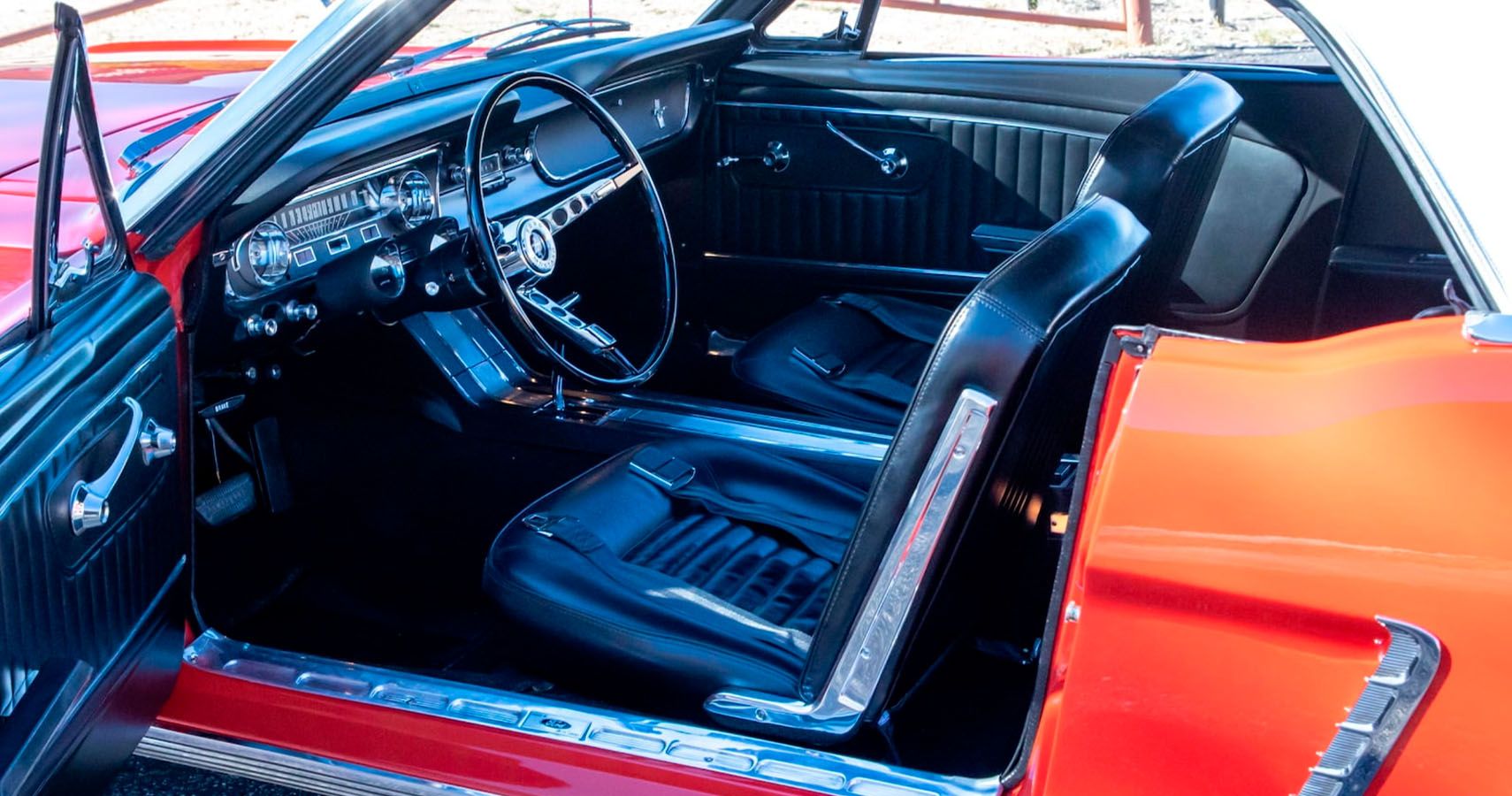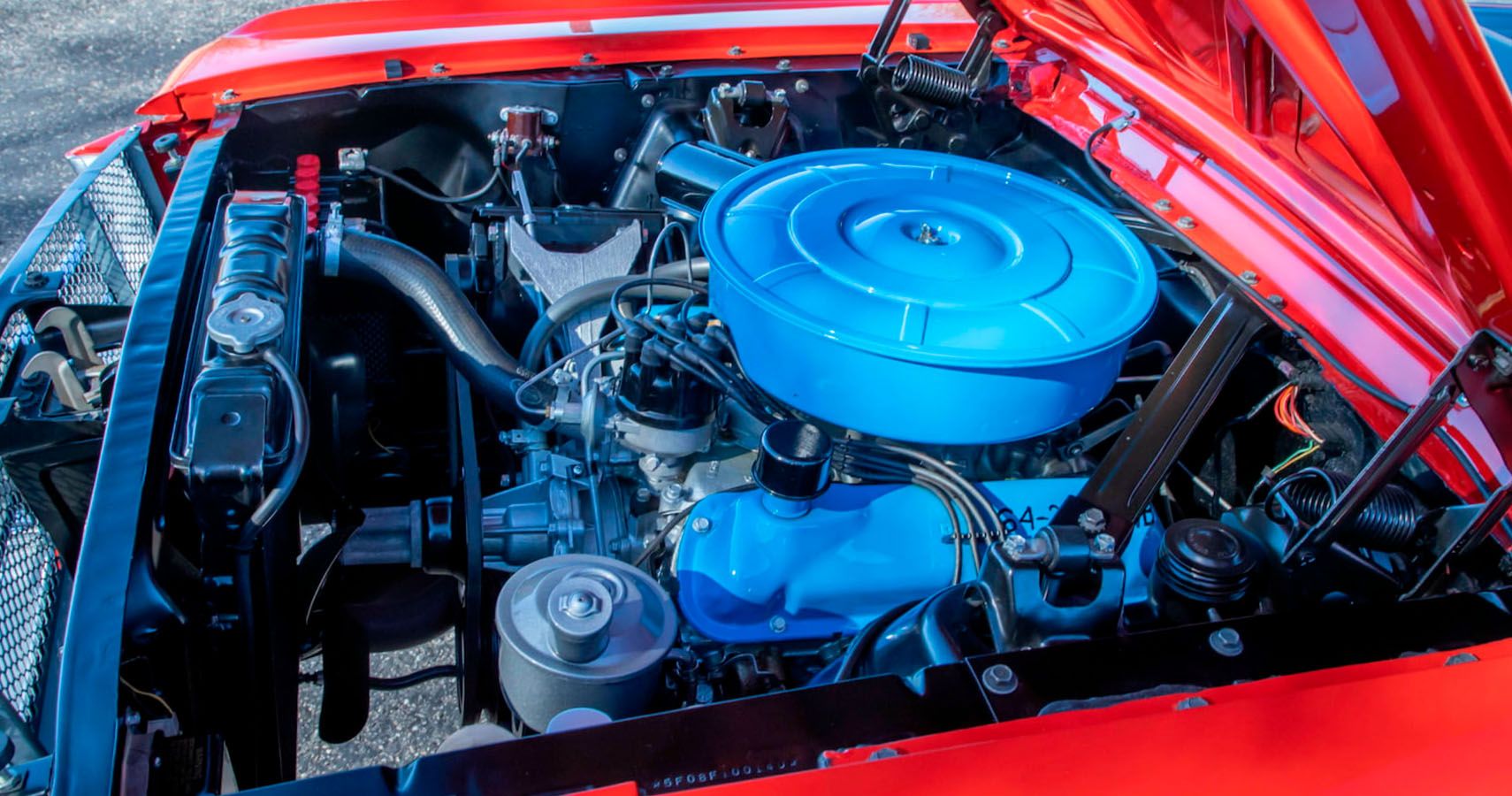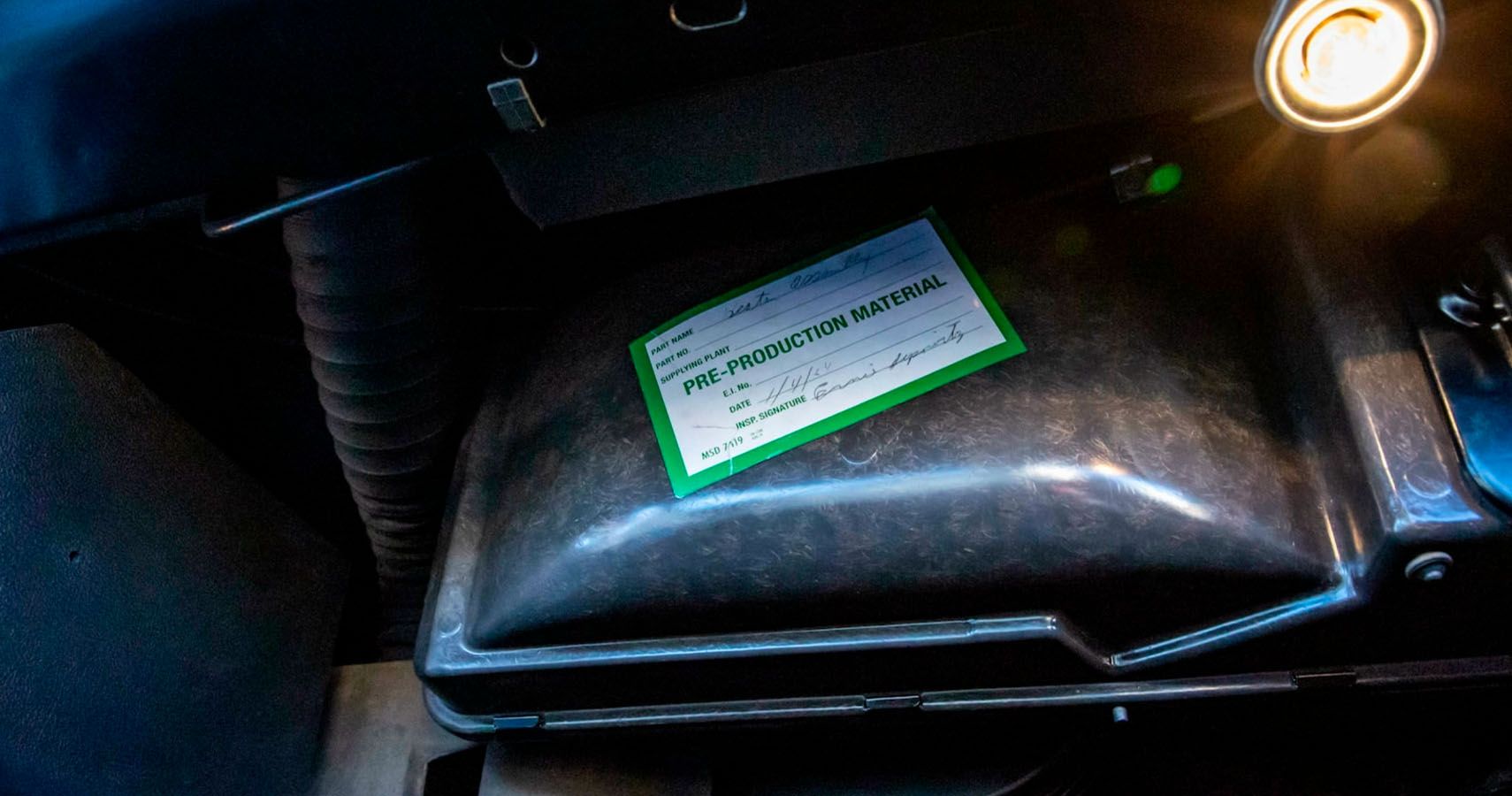Mecum's annual Glendale auction kicks off next week featuring a huge selection of classic American collectibles, European sports cars, motorcycles, and memorabilia. One highlight of the festivities comes in the form of two almost perfectly matching pre-production Ford Mustangs that will cross the block as lots S215 and S216 on Saturday afternoon.
The two Mustangs look almost indistinguishable from a distance, other than the choice between a black or white convertible top. But each will undoubtedly attract attention as one of only 15 pre-production Mustangs known to exist, with extensive documentation of their histories including Concours-level restorations completed in the past 15 years.
Now seems like the perfect time to sell a collectible Mustang, as recent world-record auction sales included the famous Bullitt Mustang and, more recently, the famous Flying Mustang racecar. Mecum estimates each of these pre-production pony cars will fetch somewhere in the $300-350,000 range, so before the bidding action ramps up, I spoke with private consignor Archie Beard about how he ended up with two consecutive serial number cars—and why he decided to sell them both next week.
Finding No. 139 On Craigslist
Beard now lives in Tucson, about a two-hour drive from Glendale, but his Mustang journey to Mecum began decades ago.
"I grew up in the Denver area," Beard told me, "And just always been a car fanatic, especially around the early Mustangs. The first car I bought in high school, literally at age 15 before I could drive, was a '65 coupe."
Over the years, Beard owned multiple other Mustangs and began considering himself something of an expert—until a listing online piqued his attention, that is.
"I just was doing my favorite hobby of looking for cars on Craigslist," he recalled. "The ad was located in Thornton, Colorado, just another suburb of Denver, and it said '65 pre-production Mustang. At the time, I thought that I was really an aficionado on early Mustangs and I said, 'I've never heard of a pre-production, what is this guy talking about?'"
Beard remembers calling the seller on a Thursday and asking him to hold the car until Saturday. That window provided time to drive up from Arizona, as well as search for more info on pre-production Mustangs before an initial visit in person.
First Encounters With 139 And 140
After arriving in Thornton with his wife in tow, Beard took the car, chassis number 139, for a quick test drive before closing the deal on the spot. He then drove the new-to-him pre-production Mustang about 30 miles back across Denver to his second home in Golden.
"It ran great but you could tell it needed some work," Beard explained. "It had really been stored for a long time."
The seller said he wanted 139 to go to a good home—and Beard assured him with plans to undertake a full Concours restoration. Perusing through online forums and researching restoration shops led to the conclusion that a car this rare required the services of Buckeye Classic Car Restoration in Canfield, Ohio, a shop that actually restored chassis number 140 about a decade prior.
Then, while visiting owners Nathan and John Miller during the course of the 18-month process, Beard actually ran into 140 in the flesh as it received some carburetor tuning.
A Network Of Pre-Production Knowledge
Beard explained just how much knowledge the restoration of a pre-production car like 139 requires, which made the Millers his clear and obvious preference for a Concours-level job.
"There are literally 200 things that are different from production cars," Beard said. "There's small little nuances and there's some that are very big. The cars are not dimensionally the same size, and a lot of it's in the sheet metal. They're actually one-inch shorter, a half-inch wider. And most of that's in sheet metal, so doing a restoration on these, it's not like you can just go buy a lot of parts and redo it."
Buckeye also sent certain parts out to other shops when their own experience and skills dictated, including the door sills which needed refinishing in perfect aluminum. Part of the challenge involved retaining as much of the original materials on 139 as possible, from the nuts and bolts to specifics like carpeting and even the convertible top bows.
"On 139, we used a piece of a NOS carpet," Beard said. "It was new-old-stock, but it was correct for the year and everything. The heel pad that was in the original carpet in 139 was in very good shape still, so they actually cut that out and the original heel pad to that car is still in it."
If the specifics of a heel pad sound less important than such efforts suggest, keep in mind that on pre-production cars, little differences crop up even between consecutive cars.
"If you look at the convertible top bows on 140," Beard explained, "They're more flat than they are on 139. And that was just a running change. The very early ones were flat and then later, as they were getting ready to be assembled, were more of an arc so they get the water draining off the top, is my understanding."
No. 140 Pops Up For Sale
Still, Beard readily admits that even calling the two cars consecutive, despite their consecutive serial numbers, might not accurately portray how the factory actually built them. Matching 05C date codes, exclusive to pre-production cars built on March 5th of the first year (1964, not 1965 as the Craigslist ad might have claimed), indicate how closely 139 and 140 rolled off the line—but the pre-production manufacturing process may have included different work at different times as Ford honed the Mustang's convertible design.
"There's no way to say that they're truly consecutive," he told me. "There was no real assembly line. So it's not like these two rolled right down the line, but they were consecutive in how they received their numbering."
Still, 139 and 140 slot in as two of only 15 known survivors—out of an estimated 180 to 200 pre-production Mustangs ever built. Which explains why in 2021, when the owner of 140 called Beard up at the tail end of culling his 50-car collection, uniting the two consecutive cars felt almost like fate.
Little Differences Between Two Consecutive Serial Numbers
I asked Beard if he or the Millers discovered any additional differences while working on the two cars—other than the black and white convertible tops, not to mention the arc of the bows.
"140 has its engine painted silver," he replied. "The speculation there was that was done to quickly look for any engine leaks or potential problems with fluid loss. Mustang number one, that's in the Ford museum, also has a silver-painted engine."
In contrast to the silver engine, 139 sports a fully black block with matching blue valve covers on top. The condition of 139 and 140 also varied by the time Buckeye began work. Beard told me he acquired 139 almost entirely intact, thanks to a long period garaged in dry Colorado air, but 140 required rust remediation when the previous owner commissioned its restoration in 2008, including around the rocker drains in the quarter panels. But for the most part, the similarities greatly outweigh most differences.
"If you look at the two cars and you really start going piece-by-piece," Beard said, "Even in the engine bay, looking at the starter solenoid, the battery, the starter. You start looking at all that, it's like, 'Man, these things are close duplicates of each other!'"
Deciding To Sell
Given the recent records set at auction, I brought up that now seems like the perfect time to sell collectible Mustangs. Beard explained that the timing came down to wanting such important cars to do more than just sit in his garage.
"They're not drivers, as far as I'm concerned. I've got another 64-and-a-half convertible that was May of '64, but I drive it all the time."
Beard showed 139 and 140 at the Mustang Club of America’s Spirit of the West National Show in Tucson last October, where they took home the Bronze and Silver Award, respectively. The attention from so many judges enamored with seeing two almost-matching pre-production cars at the same time possibly nudged Beard towards selling with Mecum at Glendale. He hopes both will end up on public display, where Mustang fans can learn more about what 139 and 140 mean within the history of Ford's original pony car.
"I'm just a guy that is the current caretaker, that's how I look at it. Someone's gonna get them next and hopefully take them to the next step and do better things with them."
Sources: mecum.com, buckeyeclassiccarrestoration.com, and mustang.org.

